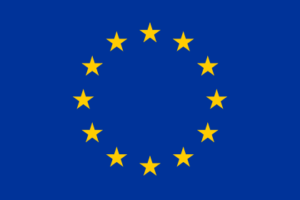Authors: Kirsty Wallis, Thomas Kaarsted, Simon Worthington, Alisa Martek and Dragana Janković.
Library Infrastructures and Citizen Science
Section Editor Kirsty Wallis
v1.0, 2023
Series: Citizen Science for Research Libraries — A Guide
DOI: 10.25815/tz0x‑m353
SOFTWARE CITATION NEEDED — INFRASTRUCTURE REMIXING
Software plays an important role in many citizen science projects with large numbers of hobbyists using a wide variety of micro-computers and consumer devices. Citing the research software used and code contributions made by citizen participants can be recorded using Citation File Format (CFF) with DOIs across connected open infrastructures, such as: Zenodo, Zotero, and GitHub. Acknowledging citizen contributions to code is an important incentive to encourage self-directed learning.
By Simon Worthington (ORCID iD: 0000-0002-8579-9717), TIB – German National Library of Science and Technology.
Article DOI: 10.25815/d3zz-7r07
Software citation
‘Software is as integral as a research paper, monograph, or dataset in terms of facilitating the full understanding and dissemination of research.’ (S Katz et al. 2021)
Open science has advanced the understanding that the types of research objects to be cited have to expand outside of the narrow confines of the research paper, but also that acknowledgement of contributions has to widen in terms of roles, rewards, and credit. The area of research software has been one such blind spot for the scientific corpus ever since the creation of computer code in the 1940s. There have been sporadic efforts by general purpose archives, or in specific domains and for certain software packages, but the practice of archiving code has not been a general research library practice — and definitely not as an accompaniment to writing up research. In retrospect this seems a massive oversight as it’s equivalent to saying ‘let’s not have any records’ for the last eight years.
A number of institutions and communities now exist to support research software, for example Inria’s Software Heritage provides an open archive, and other institutes and communities support software in the research life-cycle, such as the Software Sustainability Institute. The ‘Software Citation Working Group’ of FORCE11 and it’s subsequent working groups has been the academic community to specifically champion software citation and has been advancing practices and infrastructures that will help make software findable, and offer credit in the academic system of rewards. But the practices are still new for research and in citizen science the practice is not yet established — with many challenges such as rapid turnover and micro-contributions (Hunter and Chih-Hsiang 2015).
Infrastructure remixing
There is an increasing automation of transferring data between infrastructures in the area of data, code, and software packages. This can allow for deposits to be made in software development environments, academic repositories — personal and institutional, and industry and consumer code repositories such as GitHub.
Preservation is an important concern for research artifacts, and it is important to note that platforms such as GitHub need to be accompanied by a preservation infrastructure. In this case GitHub can be connected to the Zenodo, Figshare, or OSF repository using the ‘version release’ mechanism, where you can choose to freeze a version of your software used as say ‘version 1.0’ and save it on Zenodo automatically with a free DOI.
Key to automation of infrastructures is ‘versioning’ where project files and each file’s revision history is stored. This versioning is commonly managed by the Git software which is used as a foundation for versioning on many infrastructures. For citizen science projects this versioning feature becomes very important as each contribution is tracked over time — made linkable line by line, over time — so that credit can be handed out to citizen science contributions.
Infobox: 5 Tips to Citing Your Research Software and Improving Discovery |
| Below is a clear guide from the American Geophysical Union (AGU) (“Software Citation – 5 Tips” n.d.) with linked resources for ensuring research software used in a project is documented for maximum visibility. These steps can easily be used as guidance for using software in citizen science projects. |
Plan, curate, and connect your software! |
|
| Get a copy of the Software Citation Checklist from Zenodo, or see the tutorial, 15 min (YouTube). Slides are here for reference. |
Resources
- Citation File Format (CFF): About the citation style with resources for further use.
- All Contributors: A bot for automating the inclusion of contributors.
- Recognising the value of software: how libraries can help the adoption of software citation, Neil Philippe Chue Hong, University of Edinburgh, United Kingdom. LIBER 2021 Session #3: Working with Software & Data. https://doi.org/10.5281/zenodo.5036311. Video, start at 57:15 and accompanying slides.
Acknowledgements: Thank you to Julien Colomb 0000-0002-3127-5520, and; Shelley Stall, AGU.
Bibliography
User Type
- Educator/museum
- Researcher/research institution
Resource type
- Digital tools
- Step by step guides
Research Field



